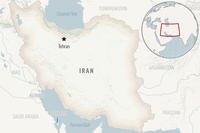A 401(k)-style retirement model that emphasizes savings over time may pose a problem for enlisted career troops, personnel chiefs for the armed services said this week.
Speaking before a Senate Armed Services Committee panel on personnel posture Tuesday, Army Deputy Chief of Staff for Personnel Lt. Gen. James McConville said he worried that the Army's noncommissioned officers would be less likely to benefit from retirement reforms designed to help troops who save over the course of their careers.
"A lot of our young soldiers live paycheck to paycheck. And if they can't start saving early, they're going to have a tough time staying with the force when they get to 20, 25 years," he said. "We have some great noncommissioned officers who are serving 32 years, doing hard work, and we want to make sure they have a good retirement when they get to that level."
The retirement reform, set to become mandatory for all troops who enlist after Jan. 1, 2018, would replace the lump-sum retirement payouts troops get now after leaving the service at 20 years with a contribution-matching system, invested in a Thrift Savings Plan account. Troops who continue to serve after 12 years would also receive a "continuation pay" bonus.
The 20-year retirement pensions would still be offered under the new plan, but would be worth about 80 percent of what they are today.
In Tuesday's hearing, Sen. Angus King, an Independent from Maine, asked for input on the system.
"I've heard lower level enlisted people can't make the payments in the 401(k)," King said. "I'd just like your thoughts on how that looks now from the field."
Vice Adm. Bill Moran, the chief of naval personnel, said he would like to see some flexibility for the Navy in the continuation pay feature of the new retirement plan.
"This continuation of pay at 12 years is locked right now at 12 years," he said. "I believe, with the Navy in particular, with growing high-tech skilled environments and lower skilled requirements, we need flexibility in that 12 years."
Moran suggested the Navy be offered the ability to apply continuation pay for troops anywhere between eight and 14 years of service, giving the officials the ability to force shape and build incentives in high-demand fields.
Lt. Gen. Gina Grosso, deputy chief of staff for manpower, personnel and services for the Air Force, said she also wanted to see continuation pay flexibility built into retirement reforms.
"We would [also] like to see matching to 30 years of service, not stopping at 26, because we have a significant portion of our senior NCOs that serve who need to stay in beyond 26 years," she said.
The Marine Corps' deputy commandant for manpower and reserve affairs, Lt. Gen. Mark Brilakis, said he was unsure how the savings plan would affect enlisted Marines in practice, but added that he too would like to see flexibility in continuation pay to give Marine Corps planners more options.
"Because if we're having retention issues earlier, it will be one of those things that we can use to increase our retention," he said.
Details of the new retirement plan were passed in the 2016 National Defense Authorization Act last year. But the Pentagon has already started pushing for changes. The 2017 budget request included language asking Congress to revisit several part of retirement reform, including continuation pay. It also seeks to delay when junior troops can begin receiving matching contributions while letting longer-serving troops get matching contributions until they retire.
--Hope Hodge Seck can be reached at hope.seck@military.com. Follow her on Twitter at @HopeSeck.





























